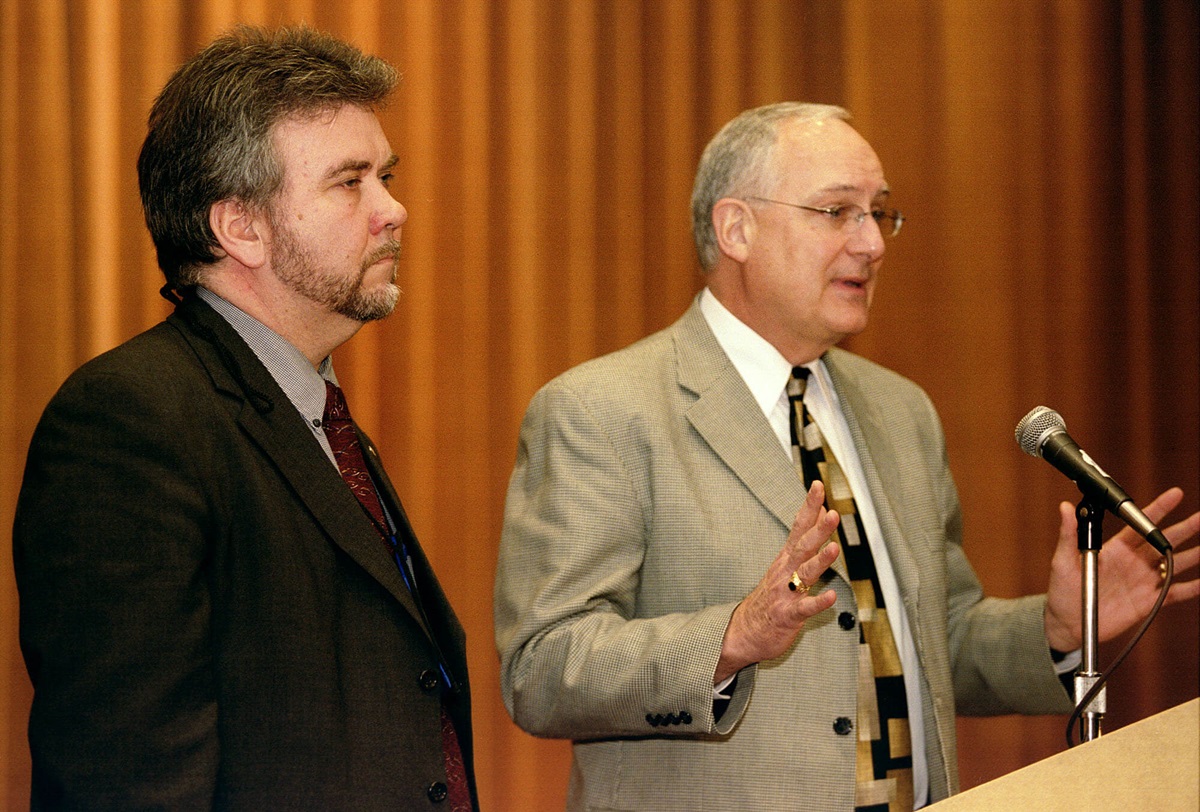As it did four years ago, the United Methodist Church's top legislative assembly will once again consider a proposal for reordering the work of the denomination when delegates meet April 27-May 7 in Pittsburgh.
General Conference all but gutted the earlier proposal, brought by a Connectional Process Team, but it salvaged pieces of the plan and passed them on to the church's program-coordinating agency for more work. The resulting "Living Into the Future" plan proposes merging the work of the denomination's program-coordinating and finance agencies into a "Connectional Table," which would oversee ministries budgeted at more than $500 million per quadrennium.
Advocates say the proposal would bring the widespread denomination together. United Methodists have congregations and other ministries on four continents - Africa, Asia, Europe and North America (primarily the United States). All regions would be represented at the table, along with the Council of Bishops and officials from the churchwide general agencies.
Critics say the proposal would weaken the fiscal accountability and auditing function performed since 1972 by the denomination's finance and administration agency. Some opponents also take issue with the size of the table.
Even the document's proponents anticipate that it will be revised, which is standard procedure for United Methodist General Conferences. The assembly meets once every four years.
The document, as presented, would fold the two top-tier coordinating agencies into the Connectional Table as of Jan. 1, 2007. Those agencies are the General Council on Finance and Administration, with a 41-member governing board, and the General Council on Ministries, governed by 78 members. Ten other agencies accountable to the General Council on Ministries would retain their free-standing boards, with about 500 directors, but be accountable to and represented at the Connectional Table.
"Living Into the Future" is the General Council on Ministries' response to a mandate given to it by the General Conference four years ago to create "the most effective design for the work of the general agencies." The mandate is the latest in a series of efforts by General Conference over the years to improve the operation and coordination of churchwide ministries.
The council's conciliar officer, Cecelia M. Long, explained that in fulfilling this assignment, input was sought from annual conferences, central conferences, general agencies and others from across the church. The council has offices in Dayton, Ohio.
"GCOM believes 'Living Into the Future' provides the most effective setting for visioning, discernment and decision-making by members with a holistic view of the church," Long said.
"This proposal is an initial step, not the final step. The Connectional Table would determine what further changes are needed," she said. The table would recommend any such changes to the General Conference for approval.
The document is closer to current structure than were several proposals that surfaced within the General Council on Ministries in 2000, soon after the agency began working on the assignment. One idea called for dissolving the boards of most of the denomination's 14 agencies into one "General Board of the United Methodist Church." Council directors also discussed and set aside the idea of proposing a bicameral (two-part) legislative structure with a lay/clergy "house" and a "House of Bishops."
"Living Into the Future" evolved through several council meetings, regional hearings and drafts by a writing team. The council adopted it in September 2003 for referral to the General Conference.
One of the document's most insistent critics is the council's own elected secretary. The Rev. Andy Langford, senior pastor of Central United Methodist Church in Concord, N.C., acknowledges that the proposal "suggests a closer relationship between finances and ministry" but leaves a group of general agencies "even more distant from people in the pew and (leaves) even more distrust and inertia throughout the (whole church) connection."
In a 4,500-word written response, Langford said he hopes that the Pittsburgh gathering "will set aside 'Living Into the Future' and make the serious reforms that our denomination so badly needs." He indicated that the preferred model would be "smaller, less expensive and less centralized."
The Advance Daily Christian Advocate, a compilation of all the legislation going to General Conference, includes at least two proposals labeled as alternative Connectional Table plans. One calls for a smaller table - with 29 members instead of the 131 to 134 possible under "Living Into the Future" - with no budgetary authority. The other emphasizes evangelism and social action as key areas of focus and proposes that the new entity plan an annual convocation "where all United Methodists are invited to conduct the business" of the table.
Like all proposals for changes in United Methodist Church law, "Living Into the Future" will go first to the appropriate legislative committee, in this instance the 95-member General Conference Committee on General Administration. The committee could decide to accept "Living Into the Future," develop a different restructure proposal or retain the status quo.
*Lovelace is a writer and editor in Dallas. He has covered eight United Methodist General Conferences. News media can contact Tim Tanton at (615) 742-5470 or [email protected].
Like what you're reading? Support the ministry of UM News! Your support ensures the latest denominational news, dynamic stories and informative articles will continue to connect our global community. Make a tax-deductible donation at ResourceUMC.org/GiveUMCom.




